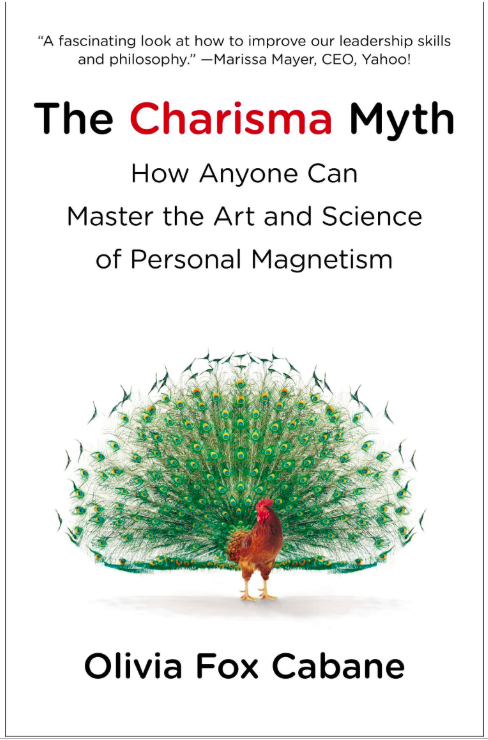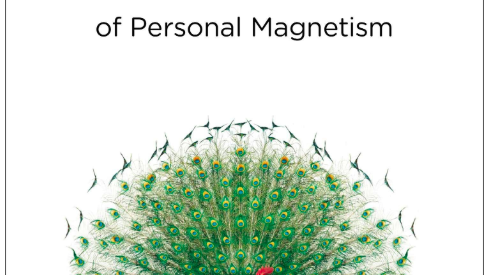 The Charisma Myth by Olivia Fox Cabane
The Charisma Myth by Olivia Fox Cabane
I picked up this book after hearing something about it on a podcast (I can?t, for the life of me, remember which one) and the name hooked me.
As an introvert who?s held leadership positions, I?ve always yearned to have more charisma, but never formally studied it.
Sure, I?ve listened to podcasts (you sensing a theme here in my life?), read articles, and heard anecdotal advice, but I can?t say I used any sort of disciplined approach to trying to improve my charisma (also, I realized, it?d be hard to measure it objectively). So, when the book became available at my library, I was pumped.
After reading it, I can?t say it blew me out of the world, but I did pull what value I could from it. Below are key points in The Charisma Myth.
(And you can always scroll down for my actual opinion of the book.)
1. Charisma consists of three components: Power, Presence, and Warmth
With every leader Cabane describes (for the most part, the tired examples of Bill Clinton and Steve Jobs), she outlines which component they emphasized. As you might guess, Jobs wasn?t huge on warmth, but displayed plenty of power and presence. Clinton, on the other hand, is known for his warmth and presence, foremost, and power last.
Cabane describes four charisma categories:
- Focus charisma (someone who listens intently and makes people feel respected and heard, such as Oprah)
- Visionary charisma (complete conviction in an idea or cause and inspires others to follow; Steve Jobs or cult leaders are examples of this type)
- Kindness charisma (warmth and emotional connection are the major elements with this type; the Dalai Lama is the example used in the book)
- Authority charisma (power and status are key to this type; examples include Stalin, Hitler, etc)
2. Make yourself comfortable if you want to be charismatic
When you?re uncomfortable because your underwear is itching you, the sun?s in your eyes, or your shoes are squeezing the last remaining drops of blood out of your pinky toe, you?re not displaying the microexpressions or body language associated with charisma.
Cabane warns readers who wish to employ charisma during business meetings or sales pitches that wrong clothing choices can really make or break a deal.
The easy fix is to try to avoid the situation in the first place by planning ahead or adjusting yourself as necessary before interacting with anyone; if your discomfort is out of your hands, the second best thing is to tell your companion(s) what?s going on.
The example she used was a man who was very sensitive to sunlight, so it often appeared he was squinting, which is not a facial expression you want to use for charisma. He learned to find tables in dim restaurants or explain up front his situation.
3. Create a ritual to get you in your peak state before you need to be charismatic
While Cabane doesn?t mention this (she calls is creating charismatic mental states), but if you know Tony Robbins? material at all, you?ll understand this idea as finding your peak state.
Say you have a presentation to make to a group of investors who intimidate you. You?re hoping to display visionary charisma. Before jumping into the meeting, you?d want to visualize your presentation, down to the facial expressions and reactions of your audience. In the hours before the meeting, you?d avoid any confidence draining activities, and focus on anything that boosts it. Music is a component as well.
This chapter reminded me of when I was in the Army. Before briefing the battalion or brigade staff (as a young, female, introverted lieutenant), I?d listen to hardcore metal, rap, or anything aggressive I could find. It helped get me in a powerful (and somewhat masculine) mindset, which helped me deliver my presentation in a powerful manner.
4. Use mindfulness techniques to build charisma and presence
One exercise Cabane walks readers through for self-compassion is related to Metta (loving kindness).
Here?s what to do:
- Take a few breaths
- Recall a time when you did a good deed
- Imagine someone (alive, dead, real, mythical) displaying warm affection for you
- Imagine a feeling of forgiveness and acceptance radiated from that being and enveloping you.
In addition to simple meditation, scanning your body head to toe to come back to the moment, and Metta, Cabane gives a few compassion mindfulness exercises such as imagining yourself giving the eulogy of someone you want to feel compassion for.
She also uses a version of what Tara Brach fans will know as ?inviting Mara to tea.? Essentially, when you feel a sensation arise, such as discomfort, anger, or frustration, you name the emotion, allow it, and delve into is rather than resist. Cabane tells readers to remind themselves of all the people in the world who?ve experienced the same exact emotion in the past, if not right at the moment with you.
5. Every choice matters
The heart of the book seemed to be: Be conscious in your actions, body language, language, tone, and interactions with people for maximum charisma.
That means dressing and presenting yourself with care, listening intently to your conversation partner, minding your body language, choosing words carefully and crafting stories when presenting in front of an audience, varying your voice fluctuation for maximum impact, and staying in the moment, conscious of your feelings as often as possible.
Each piece of advice holds a simple truth of how we should strive to live, it?s just hard to string all of them together, at all times.
Practical Exercises You Can Try Right Now
- Pausing for two seconds before responding
- Sensing for the bottoms of your feet to put yourself back in your body and gain presence
- Writing a letter of apology from anyone you feel wronged by (especially any colleagues you see or work with regularly)
- Imagine the people around you have wings sprouting from their backs ? this can help build empathy
- Create a mantra for yourself; examples: I see and accept you; We are both worthy.
- Subtly mimicking body language of the person you?re speaking with
- Give solid, warm handshakes
- Be the ?big gorilla.? Cabane uses this metaphor to illustrate how readers can practice taking up space
What I Actually Thought of the Book
Gah, I feel bad saying this, especially after reading so many articles last year about never voicing a negative review of someone?s work, but I want to be honest: I did NOT have any inclination to finish this book after I read the first 10 pages.
I had heard about The Charisma Myth on a podcast or mentioned in an article, and it was hyped pretty well. However, Cabane doesn?t quite deliver. If you?ve read Dale Carnegie, Malcolm Gladwell, Adam Grant, Tara Brach, or anyone similar (or even just a number of Fast Company articles), the book comes off like a watered down version of previously articulated advice on confidence, mindfulness, and employee relationships.
The examples Cabane chooses aren?t very engaging, the advice is repackaged and well-known, and the storytelling thread to pull you through is lacking. I plodded until I reached the end simply because I can?t stand to put aside a recommended book that promises a skillset I desire. And, I wanted to write a review and didn?t want to cheat. However, if I were reading for just myself, I would have put this one aside before reaching the end of the first chapter.
Find more practical tips in my book reviews: 5 Lifelong Lessons from The Magic of Thinking Big by David Schwartz and 5 Practices from Deep Work by Cal Newport That?ll Change Your Life
Have a book you?d like me to review so you can get the essential takeaways? Send me a note! Connecting with a fellow personal development nerd will make my day.


